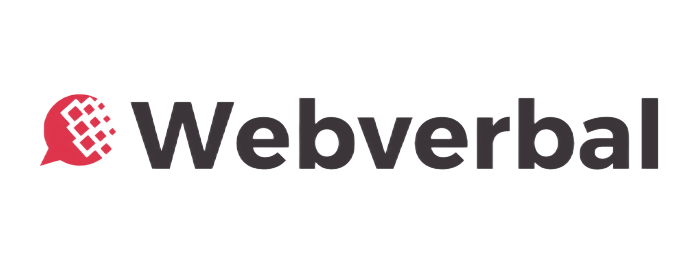Table Of Content
- What Is Pricing Psychology and Why Does It Matter in India?
- Core Pricing Psychology Principles That Drive Indian Consumers
- The ₹99 Effect: Why Charm Pricing Works Differently in India
- Reference Pricing and the MRP Psychology
- Price-Quality Perception in Trust-Deficit Markets
- Bundle Pricing and the “Complete Solution” Mindset
- Scarcity Pricing and FOMO in Digital India
- Sachetisation: The Micro-Pricing Revolution
- Understanding Indian Consumer Segments Through Pricing Lens
- Rural Consumers: Value-Driven Decision Making
- Tier 2/3 City Consumers: The Aspirational Segment
- Urban Millennials and Gen Z: Convenience-Premium Willing
- Data Deep Dive: Numbers That Define Pricing Psychology in India
- Payment Method Preferences and Pricing Sensitivity
- Festival Season Pricing Impact
- Regional Price Sensitivity Variations
- Case Studies: Pricing Psychology Masters in India
- Case Study 1: Patanjali’s Psychological Pricing Revolution
- Case Study 2: Jio’s “Free” Pricing Psychology Masterclass
- Case Study 3: Flipkart’s Big Billion Days Pricing Psychology
- Case Study 4: HUL’s Sachetisation Success Story
- Real Conversations: Pricing Psychology in Action
- Conversation 1: The Mentor-Founder Discussion
- Conversation 2: The Rural Entrepreneur’s Dilemma
- Conversation 3: The Urban Millennial’s Shopping Logic
- Ethical Pricing Practices: Building Trust in the Indian Market
- The Do’s of Pricing Psychology
- The Don’ts That Damage Brand Trust
- Building Long-term Trust Through Pricing
- Pricing as Storytelling: The Future of Indian Commerce
- Frequently Asked Questions
Picture this: A rural entrepreneur in Rajasthan sells the same soap for ₹99 in his village store and ₹100 in the nearby town. The ₹99 version outsells the ₹100 one by 3:1, even though they’re identical products. Meanwhile, in Mumbai, a millennial happily pays ₹2,500 EMI for a ₹30,000 smartphone but hesitates to buy a ₹250 book outright.
Welcome to the fascinating world of pricing psychology in India—where a single rupee can make or break a purchase decision, and where consumer behaviour defies conventional economic logic.
During my tenure as a Mentor for change with NITI Aayog, I witnessed countless policy discussions around consumer protection and market dynamics. But the most intriguing insights came from studying how 1.4 billion Indians actually make purchasing decisions. The patterns weren’t just about affordability—they revealed deep psychological triggers that smart businesses could leverage ethically and effectively.
Today, understanding pricing psychology in India isn’t optional. It’s the difference between scaling successfully and struggling to connect with your audience. Whether you’re launching a startup, expanding to rural markets, or optimizing your e-commerce strategy, mastering these principles will transform how you approach pricing.
To dive deeper into the broader cultural and behavioral shifts shaping Indian buyers, check out our detailed article: How to Decode Indian Consumer Psychology in 2025 — a comprehensive guide to understanding the world’s most complex consumer market.
What Is Pricing Psychology and Why Does It Matter in India?
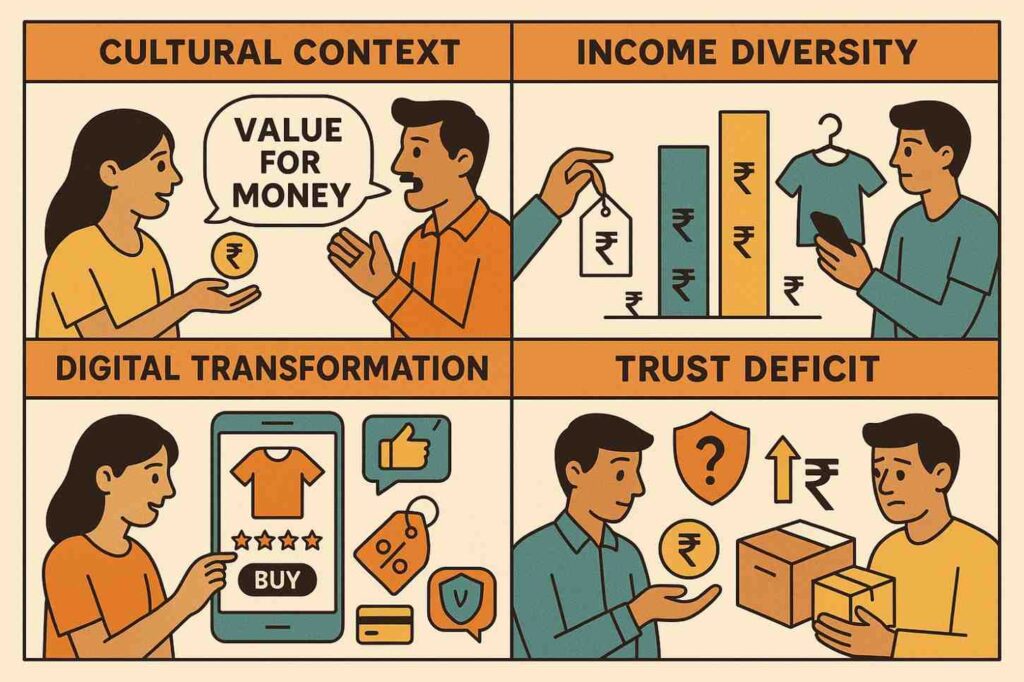
Pricing psychology refers to how consumers perceive, process, and respond to different pricing strategies. It’s the study of mental shortcuts, emotional triggers, and cognitive biases that influence purchase decisions—often more powerfully than rational economic factors.
In India, pricing psychology takes on unique dimensions due to several factors:
Cultural Context: Our haggling tradition means Indians are naturally price-conscious negotiators. The concept of “value for money” is deeply ingrained in our DNA.
Income Diversity: With per capita income varying dramatically across regions, the same product needs different psychological positioning for different segments.
Digital Transformation: The rapid shift from offline to online shopping has created new psychological patterns around discounts, reviews, and payment methods.
Trust Deficit: In a market where counterfeit products are common, price often serves as a quality signal, creating complex perception dynamics.
According to Nielsen’s Global Consumer Confidence Survey 2024, 78% of Indian consumers actively compare prices across multiple platforms before making a purchase—significantly higher than the global average of 52%. This makes pricing psychology not just relevant, but critical for business success.
Core Pricing Psychology Principles That Drive Indian Consumers
The ₹99 Effect: Why Charm Pricing Works Differently in India
Charm pricing—ending prices with 9—isn’t new globally, but in India, it carries additional cultural weight. The ₹99 price point has become synonymous with “smart value” rather than just appearing cheaper.
Research by Redseer Consulting shows that products priced at ₹99, ₹199, and ₹999 generate 23% higher click-through rates on Indian e-commerce platforms compared to round number equivalents.
Why this works in India:
- ₹99 feels like a “calculated deal” rather than an arbitrary discount
- The number 9 is considered auspicious in many Indian cultures
- It triggers the “bargain hunter” mindset that Indians take pride in
Reference Pricing and the MRP Psychology
Maximum Retail Price (MRP) printing is mandatory in India, creating a unique reference pricing dynamic. Consumers don’t just see the selling price—they see the “savings” from MRP, which becomes a psychological anchor.
The MRP Effect in Action:
- A product with MRP ₹500 selling at ₹350 feels like a 30% win
- The same product originally priced at ₹350 with no MRP feels “expensive”
- This explains why even premium brands maintain high MRPs
Price-Quality Perception in Trust-Deficit Markets
In markets where product authenticity is questionable, price becomes a quality signal. This creates interesting dynamics:
Premium Positioning: Patanjali successfully used “premium Ayurvedic” pricing to compete with multinational brands, positioning higher prices as authenticity markers.
Value Engineering: Xiaomi’s strategy of offering flagship features at mid-range prices disrupted the smartphone market by breaking traditional price-quality assumptions.
Bundle Pricing and the “Complete Solution” Mindset
Indian consumers love feeling they’ve gotten everything they need in one purchase. This stems from:
- Traditional shopping habits (buying monthly supplies)
- Risk aversion (fear of multiple transaction failures)
- Value maximization mindset
Successful Bundle Examples:
- Jio’s “free” calling + data bundles
- Flipkart’s “combo offers” during sales
- DTH “annual recharge” discounts
Scarcity Pricing and FOMO in Digital India
Limited-time offers and flash sales tap into India’s scarcity mindset, developed through decades of resource constraints.
FOMO Triggers in Indian Context:
- “Only 2 left in stock” messaging
- Festival sale countdowns
- “Last day of sale” notifications
Sachetisation: The Micro-Pricing Revolution
Perhaps India’s most unique contribution to global pricing psychology is sachetisation—breaking products into smaller, affordable units.
Impact Data:
- Sachets account for 40% of FMCG sales in rural India (Nielsen 2024)
- ₹5-10 price points drive 60% of impulse purchases in Tier 2/3 cities
- Sachet trial leads to full-size purchases for 35% of consumers
Understanding Indian Consumer Segments Through Pricing Lens
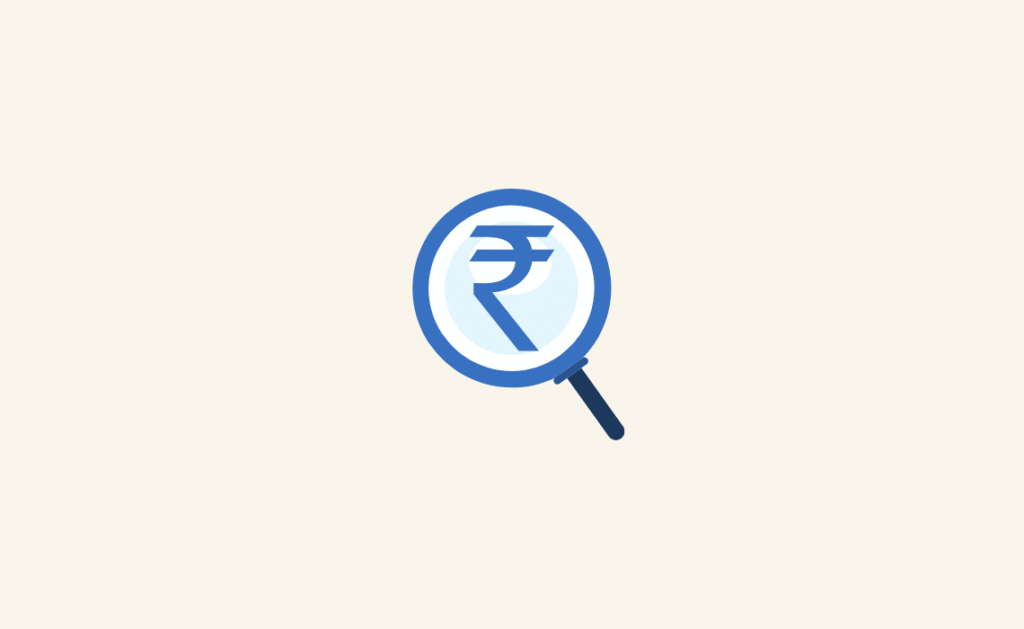
Rural Consumers: Value-Driven Decision Making
Rural India represents 65% of the population but exhibits distinct pricing psychology patterns:
Key Characteristics:
- Cash-dominant transactions (78% of rural purchases are cash-based)
- Seasonal purchase patterns aligned with harvest cycles
- Strong word-of-mouth influence on pricing perceptions
- Preference for familiar brands at premium prices over unknown brands at discounts
Pricing Strategies That Work:
- Sachet offerings for trial
- Bulk discounts during harvest season
- Cash payment discounts
- Local influencer endorsements to justify premium pricing
Tier 2/3 City Consumers: The Aspirational Segment
This segment shows the most complex pricing psychology:
Behavioral Patterns:
- Higher EMI adoption rates (43% vs 31% in metros) – IAMAI Digital Commerce Report 2024
- Festival timing significantly impacts purchase decisions
- Online research but offline purchase preference
- Price comparison across online and offline channels
Winning Approaches:
- EMI options starting at ₹99
- Festival season special pricing
- Online-offline price parity
- Local language communication about value propositions
Urban Millennials and Gen Z: Convenience-Premium Willing
The youngest consumer segment shows surprising pricing psychology traits:
Unique Characteristics:
- 67% willing to pay premium for convenience (faster delivery, easy returns)
- Subscription model adoption 3x higher than older generations
- Sustainability-linked pricing acceptance growing at 25% CAGR
- Social proof heavily influences price perception
Data Deep Dive: Numbers That Define Pricing Psychology in India
Payment Method Preferences and Pricing Sensitivity
| Payment Method | Rural Usage | Urban Usage | Price Sensitivity Impact |
|---|---|---|---|
| Cash on Delivery | 78% | 45% | +15% willingness to pay |
| UPI/Digital | 34% | 89% | -8% price sensitivity |
| Credit Card | 12% | 67% | -12% price sensitivity |
| EMI Options | 23% | 54% | +35% purchase conversion |
Source: ASSOCHAM Digital Payments Report 2024
Festival Season Pricing Impact
Festival seasons create unique pricing psychology windows:
Key Statistics:
- 73% of annual electronics purchases happen during Diwali and Dussehra season
- Average purchase value increases by 45% during festive sales
- New customer acquisition costs drop by 30% during festival periods
- Price comparison behavior reduces by 22% during “limited time” festival offers
Regional Price Sensitivity Variations
High Price Sensitivity Regions:
- Eastern India: 34% more likely to abandon cart for price reasons
- Rural Maharashtra: 28% higher coupon usage rates
- Smaller towns in UP/Bihar: 41% preference for cheaper alternatives
Lower Price Sensitivity Regions:
- Mumbai/Pune: 23% premium willingness for convenience
- Bangalore/Hyderabad: 31% higher subscription adoption
- Delhi NCR: 27% more brand-loyal despite price differences
Case Studies: Pricing Psychology Masters in India
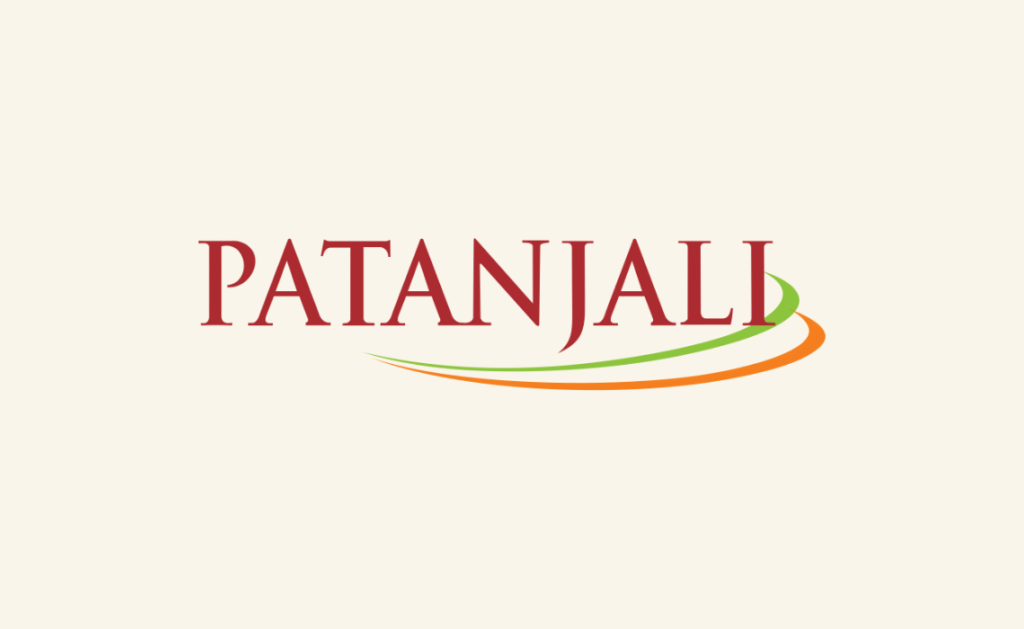
Case Study 1: Patanjali’s Psychological Pricing Revolution
When Baba Ramdev’s Patanjali entered FMCG, they didn’t compete on being cheapest. Instead, they mastered pricing psychology:
Strategy:
- Positioned as “premium Ayurvedic” with prices 10-15% higher than local brands
- Used traditional medicine credibility to justify price premiums
- Leveraged nationalism to make price secondary to “Indian values”
Results:
- Achieved ₹10,000+ crore revenue within 5 years
- Gained 2.5% market share in competitive FMCG space
- Proved that pricing psychology beats price wars
Key Learning: Cultural positioning can override pure price sensitivity.
Case Study 2: Jio’s “Free” Pricing Psychology Masterclass
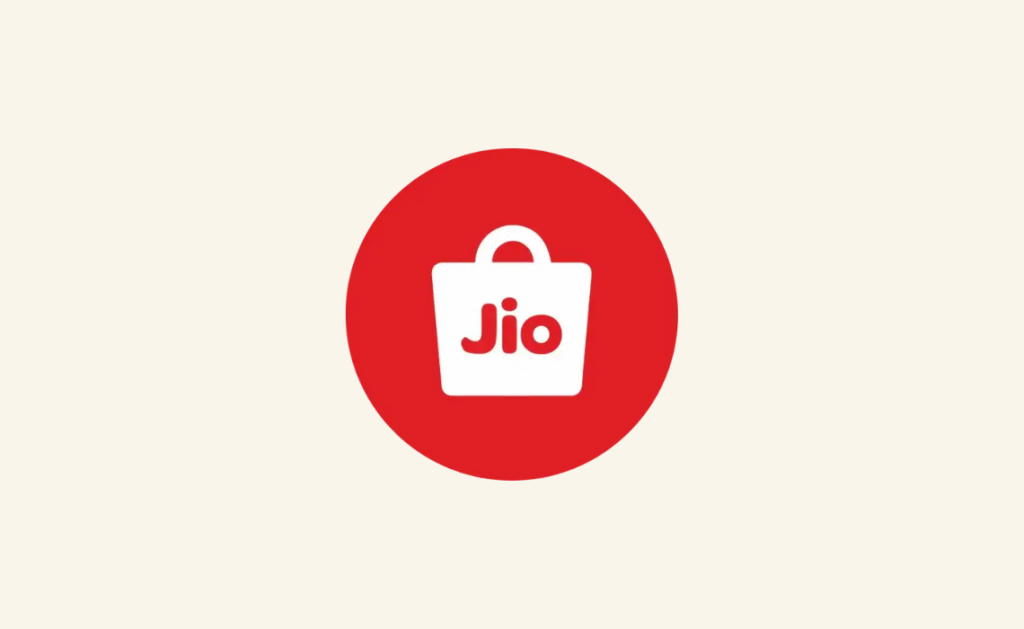
Reliance Jio’s launch strategy demonstrated sophisticated pricing psychology understanding:
Psychological Triggers Used:
- “Free” positioning (instead of “₹0” or “no charge”)
- Bundle psychology (voice + data + apps)
- Scarcity creation (“limited period offer”)
- Social proof (“35 crore Indians can’t be wrong”)
Impact:
- Acquired 100+ million subscribers in 170 days
- Changed industry pricing permanently
- Created new consumer expectations for “value bundles”
Key Learning: “Free” carries more psychological weight than numeric zero in Indian context.
Case Study 3: Flipkart’s Big Billion Days Pricing Psychology
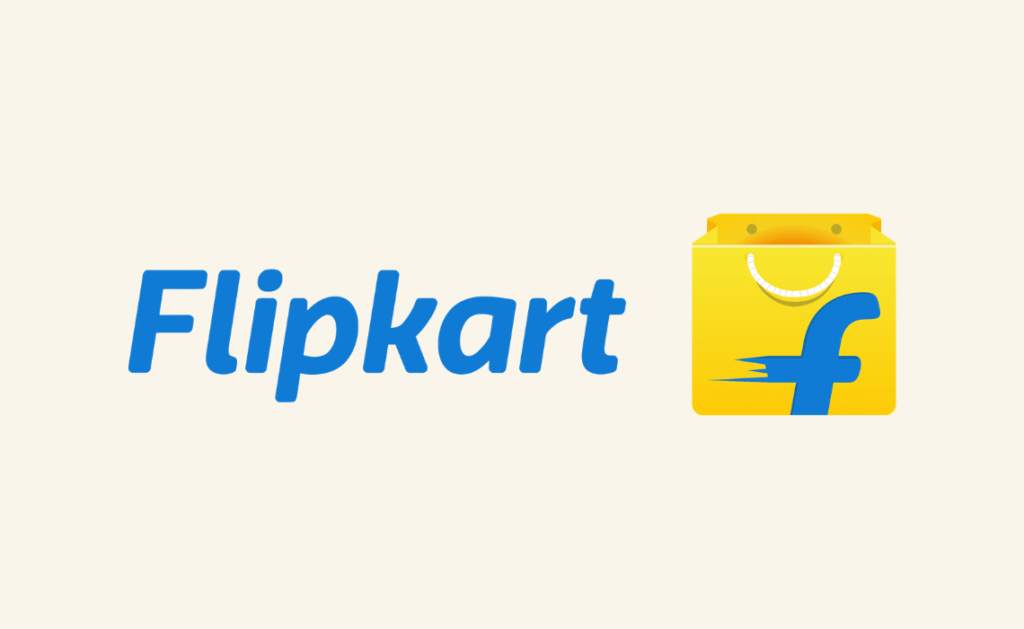
Flipkart’s annual sale demonstrates multiple pricing psychology principles:
Techniques Applied:
- Countdown timers create urgency
- “Lightning deals” leverage scarcity psychology
- Price comparison with MRP maximizes perceived savings
- Flash sale notifications trigger FOMO
Performance Data:
- 45% higher conversion rates during sale period
- Average order value increases 38%
- New customer acquisition jumps 67%
Key Learning: Combining multiple psychological triggers amplifies impact.
Case Study 4: HUL’s Sachetisation Success Story
Hindustan Unilever’s sachet strategy revolutionized FMCG pricing psychology:
Innovation:
- Introduced ₹5-10 sachets for premium products
- Created “trial pricing” that led to full-size purchases
- Made premium brands accessible without diluting brand value
Results:
- Sachets contribute 30% of total revenue
- Rural market penetration increased 5x
- Consumer upgrade journey shortened by 40%
Key Learning: Micro-pricing can democratize premium products while maintaining profitability.
Real Conversations: Pricing Psychology in Action
Conversation 1: The Mentor-Founder Discussion
Setting: A policy advisory session at NITI Aayog
Founder: “Sir, we’re struggling with pricing in rural markets. Our ₹100 product isn’t selling, but competitors at ₹80 are doing well.”
Mentor (NITI Aayog): “Tell me, what’s your product’s real value proposition?”
Founder: “Better quality, longer lasting, trusted brand.”
Mentor: “Then why are you pricing like a commodity? If it lasts twice as long, position it as ‘costs ₹100, saves ₹200’. Change the conversation from price to value. Also, consider a ₹50 trial size—let quality prove your price point.”
Key Insight: Pricing isn’t just about the number—it’s about the story around the number.
Conversation 2: The Rural Entrepreneur’s Dilemma
Setting: A village store in Uttar Pradesh
Customer: “Bhaiya, yeh soap kitne ka hai?” (Brother, how much is this soap?)
Shopkeeper: “Madam, yeh ₹99 ka hai, par aap regular customer hain, ₹95 mein de dunga.” (Madam, this is ₹99, but you’re a regular customer, I’ll give it for ₹95.)
Customer: “₹90 final karo.” (Make it ₹90 final.)
Shopkeeper: “Chaliye, ₹92. Iska MRP ₹120 hai, already bahut kam kar raha hun.” (Okay, ₹92. Its MRP is ₹120, I’m already giving a big discount.)
Key Insight: MRP serves as psychological anchor even in negotiated transactions.
Conversation 3: The Urban Millennial’s Shopping Logic
Setting: Two friends discussing online shopping
Friend 1: “I just bought this phone on EMI—₹2,000 per month for 15 months.”
Friend 2: “That’s ₹30,000! Why not buy it outright?”
Friend 1: “Are you crazy? ₹30,000 is too much. But ₹2,000? That’s like one weekend dinner. Plus, I get to use the phone immediately while keeping my savings for emergencies.”
Key Insight: EMI transforms the psychological weight of large purchases by changing the temporal perception of cost.
Ethical Pricing Practices: Building Trust in the Indian Market
The Do’s of Pricing Psychology
Transparency First:
- Clearly communicate all costs upfront
- Avoid hidden charges that damage trust
- Use pricing psychology to highlight genuine value
Cultural Sensitivity:
- Respect regional price sensitivities
- Consider local purchasing power while pricing
- Align pricing communication with cultural values
Value Creation:
- Use pricing to educate about product benefits
- Bundle complementary services meaningfully
- Create upgrade paths that serve customer needs
The Don’ts That Damage Brand Trust
Predatory Practices to Avoid:
- False scarcity creation without genuine limitations
- Misleading discount calculations from inflated MRPs
- Exploiting vulnerable segments with unfair pricing
Communication Mistakes:
- Using complex pricing structures that confuse customers
- Inconsistent pricing across channels without justification
- Ignoring regional languages in pricing communication
Building Long-term Trust Through Pricing
The most successful brands in India treat pricing as relationship-building rather than transaction optimization. This means:
- Consistent value delivery at promised price points
- Transparent communication about price changes
- Reward programs that acknowledge customer loyalty
- Fair pricing that customers can defend to their families
Pricing as Storytelling: The Future of Indian Commerce
As India’s economy continues its digital transformation, pricing psychology is evolving beyond traditional frameworks. The future belongs to brands that understand pricing as storytelling—where every price point communicates values, builds relationships, and creates emotional connections.
The New Pricing Paradigm:
- Subscription models that prioritize lifetime value
- Dynamic pricing that responds to customer behavior
- Personalized pricing based on individual value perception
- Social impact pricing that aligns with customer values
Technology’s Role:
- AI-driven price optimization based on behavioral data
- Real-time sentiment analysis for pricing adjustments
- Blockchain-based transparency in pricing components
- Voice commerce changing price discovery patterns
The brands winning in tomorrow’s India will be those that master the art of making customers feel smart about their purchase decisions. They’ll use pricing psychology not as manipulation, but as value communication—helping customers understand why their offerings deserve the price asked.
Remember, in a market as diverse and dynamic as India, there’s no one-size-fits-all pricing strategy. The key is continuous learning, ethical application, and genuine customer empathy.
As one wise policy mentor once told me during my NITI Aayog days: “In India, the customer doesn’t just buy your product—they buy the story your price tells about them. Make sure it’s a story they’re proud to share.”
Frequently Asked Questions
The most effective strategy combines charm pricing (₹99, ₹199) with clear value communication. Use MRP as anchor pricing, offer meaningful bundles, and provide payment flexibility through EMIs or COD options based on your target segment.
Rural consumers are more cash-focused, seasonal in purchases, and value-conscious. Urban consumers are more willing to pay premiums for convenience, adopt digital payments easily, and respond to time-based urgency. Rural areas prefer proven brands at slight premiums, while urban areas experiment with new brands offering value.
₹99 pricing works because it combines three psychological triggers: the left-digit bias (99 feels significantly less than 100), the bargain signal (appears discounted), and cultural affinity (9 is considered auspicious). It also triggers the “smart shopper” identity that Indians value highly.
EMI transforms large purchases into smaller, manageable monthly commitments. It reduces the psychological weight of big-ticket items and allows customers to access products immediately while preserving cash flow. EMI adoption is 43% in Tier 2/3 cities compared to 31% in metros, showing its particular importance in emerging markets.
Festival pricing is crucial—73% of annual electronics purchases happen during Diwali/Dussehra season. Festival periods create psychological permission to spend, reduce price sensitivity by 22%, and increase average purchase values by 45%. Brands must plan annual strategies around these key periods.
Sachetisation is breaking products into smaller, affordable units (₹5-10 price points). It accounts for 40% of FMCG sales in rural India and enables trial of premium products. It’s particularly effective for building brand loyalty by creating an upgrade journey from small to full-size purchases.
Cash payments increase price sensitivity as money feels “real.” Digital payments reduce sensitivity by making transactions feel less tangible. COD increases willingness to pay by 15% due to trust factors, while credit card users show 12% lower price sensitivity due to deferred payment psychology.
